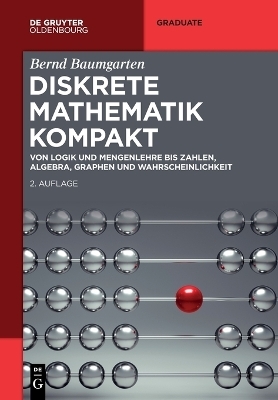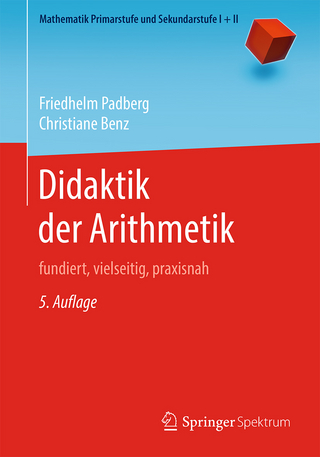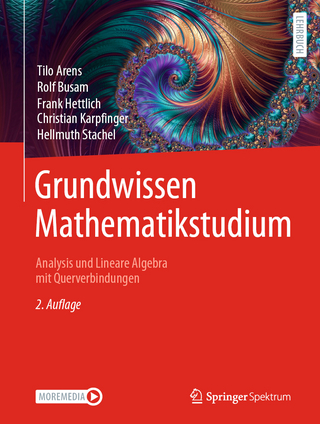
Axiomatics
Mathematical Thought and High Modernism
Seiten
2023
University of Chicago Press (Verlag)
978-0-226-82420-8 (ISBN)
University of Chicago Press (Verlag)
978-0-226-82420-8 (ISBN)
The first history of postwar mathematics, offering a new interpretation of the rise of abstraction and axiomatics in the twentieth century.
Why did abstraction dominate American art, social science, and natural science in the mid-twentieth century? Why, despite opposition, did abstraction and theoretical knowledge flourish across a diverse set of intellectual pursuits during the Cold War? In recovering the centrality of abstraction across a range of modernist projects in the United States, Alma Steingart brings mathematics back into the conversation about midcentury American intellectual thought. The expansion of mathematics in the aftermath of World War II, she demonstrates, was characterized by two opposing tendencies: research in pure mathematics became increasingly abstract and rarified, while research in applied mathematics and mathematical applications grew in prominence as new fields like operations research and game theory brought mathematical knowledge to bear on more domains of knowledge. Both were predicated on the same abstractionist conception of mathematics and were rooted in the same approach: modern axiomatics.
For American mathematicians, the humanities and the sciences did not compete with one another, but instead were two complementary sides of the same epistemological commitment. Steingart further reveals how this mathematical epistemology influenced the sciences and humanities, particularly the postwar social sciences. As mathematics changed, so did the meaning of mathematization.
Axiomatics focuses on American mathematicians during a transformative time, following a series of controversies among mathematicians about the nature of mathematics as a field of study and as a body of knowledge. The ensuing debates offer a window onto the postwar development of mathematics band Cold War epistemology writ large. As Steingart’s history ably demonstrates, mathematics is the social activity in which styles of truth—here, abstraction—become synonymous with ways of knowing.
Why did abstraction dominate American art, social science, and natural science in the mid-twentieth century? Why, despite opposition, did abstraction and theoretical knowledge flourish across a diverse set of intellectual pursuits during the Cold War? In recovering the centrality of abstraction across a range of modernist projects in the United States, Alma Steingart brings mathematics back into the conversation about midcentury American intellectual thought. The expansion of mathematics in the aftermath of World War II, she demonstrates, was characterized by two opposing tendencies: research in pure mathematics became increasingly abstract and rarified, while research in applied mathematics and mathematical applications grew in prominence as new fields like operations research and game theory brought mathematical knowledge to bear on more domains of knowledge. Both were predicated on the same abstractionist conception of mathematics and were rooted in the same approach: modern axiomatics.
For American mathematicians, the humanities and the sciences did not compete with one another, but instead were two complementary sides of the same epistemological commitment. Steingart further reveals how this mathematical epistemology influenced the sciences and humanities, particularly the postwar social sciences. As mathematics changed, so did the meaning of mathematization.
Axiomatics focuses on American mathematicians during a transformative time, following a series of controversies among mathematicians about the nature of mathematics as a field of study and as a body of knowledge. The ensuing debates offer a window onto the postwar development of mathematics band Cold War epistemology writ large. As Steingart’s history ably demonstrates, mathematics is the social activity in which styles of truth—here, abstraction—become synonymous with ways of knowing.
Alma Steingart is assistant professor of history at Columbia University. Her work has appeared in the Los Angeles Review of Books, Grey Room, Representations, and Social Studies of Science.
Note to Readers
Introduction
1. Pure Abstraction: Mathematics as Modernism
2. Applied Abstraction: Axiomatics and the Meaning of Mathematization
3. Human Abstraction: “The Mathematics of Man” and Midcentury Social Sciences
4. Creative Abstraction: Abstract Art, Pure Mathematics, and Cold War Ideology
5. Unreasonable Abstraction: The Meaning of Applicability, or the Miseducation of the Applied Mathematician
6. Historical Abstraction: Kuhn, Skinner, and the Problem of the Weekday Platonist
Epilogue
Acknowledgments
Archival Collections
Notes
Index
| Erscheinungsdatum | 14.12.2022 |
|---|---|
| Zusatzinfo | 12 halftones |
| Sprache | englisch |
| Maße | 152 x 229 mm |
| Gewicht | 399 g |
| Themenwelt | Mathematik / Informatik ► Mathematik |
| ISBN-10 | 0-226-82420-9 / 0226824209 |
| ISBN-13 | 978-0-226-82420-8 / 9780226824208 |
| Zustand | Neuware |
| Haben Sie eine Frage zum Produkt? |
Mehr entdecken
aus dem Bereich
aus dem Bereich
Von Logik und Mengenlehre bis Zahlen, Algebra, Graphen und …
Buch | Softcover (2024)
De Gruyter Oldenbourg (Verlag)
74,95 €
fundiert, vielseitig, praxisnah
Buch | Softcover (2021)
Springer Berlin (Verlag)
32,99 €
Analysis und Lineare Algebra mit Querverbindungen
Buch | Hardcover (2022)
Springer Spektrum (Verlag)
64,99 €


